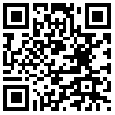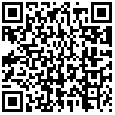Podrobnosti
Stiahnuť Docx
Čítajte viac
Katherine Johnson was an African American mathematician and physicist. Born with a thirst for knowledge, she overcame numerous obstacles to become one of the first African American women to work as a scientist at the National Aeronautics and Space Administration (NASA). Together with other female counterparts, she used hand tools and extraordinary intelligence to solve complicated equations, making important contributions to the United States space program and helped send astronauts to the Moon. Katherine Johnson’s career as a mathematician began at the West Area Computing Unit of the National Advisory Committee for Aeronautics (NACA) at the Langley Research Center, also known as the West Computers, in 1953. They were separated from the white workers and had to use different dining facilities and bathrooms until 1958, when NASA came into being. Their lives after work were totally divided, with segregated communities, schools, grocery stores, and churches. Katherine and her colleagues found ways to deal with the situation. Her father’s advice helped her to cope: “You’re no better than anybody else, but nobody is better than you.” Just two weeks into her new job, Katherine was offered a permanent position at the Flight Research Division. Katherine Johnson became the only non-white and female member of the Space Task Group at NASA. Her invaluable contributions included calculating the flight path for the spacecraft that sent the first United States astronaut, Alan Shepard, Jr., to outer space in 1961. In 1962, before John Glenn, the first American to orbit Earth in the Friendship 7 Mission, left the ground, he asked Katherine Johnson to double check the computer’s calculations to ensure the flight had been planned correctly. As the engineers were wary of blackouts and hiccups from electronic calculating machines, Katherine Johnson was requested to run through the same numbers by hand on her desktop mechanical calculating machine.During her career, Katherine Johnson authored and co-authored 26 research reports. She was one of the first women at NASA to author or co-author an agency report. She made it possible for women to attend the agency’s scientific briefings, which were previously reserved for male staff members. Katherine Johnson was awarded the Congressional Gold Medal in 2019. Her autobiography for young readers, “Reaching for the Moon” was published that year. It chronicles her life and groundbreaking work at NASA. In the book, she wrote, “Every time engineers would hand me their equations to evaluate, I would do more than what they’d asked. I’d try to think beyond their equations. […]”














